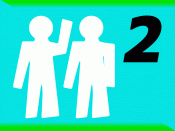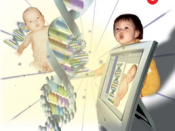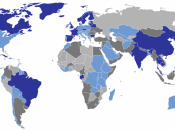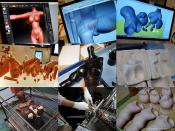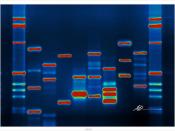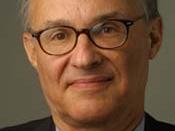For seven years now, the outlook of human cloning has been the subject of considerable public attention and moral debate, both in the United States and around the world. Since the announcement in February 1997 of the first successful cloning of a mammal, several other species of mammals have been cloned. These animal experiments have had low rates of success, but have still produced functioning mammalian cloned offspring. Although a cloned human child has yet to be born, the success of these animal experiments suggests that the eventual cloning of humans must be considered a serious possibility. Cloning is unethical and immoral and all research and attempts should be stopped.
Cloning can be defined as the process of making a genetically identical organism through some asexual means (Mader 268). The entire process of cloning a mammal is a very scientific complex procedure. According to Leon R. Kass, the process begins by obtaining an egg cell from a female of mammalian species.
Then the nuclear DNA is removed from the egg cell to produce an enucleated egg. After that, the nucleus of an adult donor cell is inserted into the enucleated egg. Chemicals or electric currents are then used to stimulate the reconstructed egg to commence cell division. The development of the embryo is then sustained to a suitable stage in vitro and then the resulting cloned embryo is transferred to the uterus of a female host who has been suitably prepared to receive it. Finally, the host female brings to live birth the cloned animal that is genetically identical to the animal that donated the adult cell nucleus (60). This process is now known as ÃÂsomatic cell nuclear transferÃÂ.
Olson 2The actual act of cloning is not new. In fact, it is almost as old as agriculture, one of manÃÂs earliest and most successful means of survival. When a farmer or a gardener takes a cutting from one plant and places it in soil, he or she has engaged in cloning. According to David Goodnough, the original purpose of cloning was simply to multiply an existing organism without waiting for nature to do its job (17). With the discovery of DNA and its functions, the process of multiplying and manipulating organisms came to be called genetic engineering. In February 1997, Scottish scientists Dr. Ian Wilmut and Keith Campbell successfully cloned a female sheep using a somatic cell nuclear transfer procedure. The sheep was named Dolly and was officially the first cloned mammal ever produced. Goodnough also says that one of the first reactions to the announcement of DollyÃÂs birth was the thought of using the ÃÂDolly MethodÃÂ to clone a human being. Government, religious and social organizations were quick to respond to this frightening new possibility. Many were outraged at what they believed was a threat to the very meaning of what it meant to be human (27).
If cloning becomes legal, it would violate the human dignity of cloned children. Potentially, these children would risk being viewed by society as commodities and treated as less than fully human because of being manufactured rather than conceived. Winters also quoted Professor Gilbert Meilaender of Valparaiso University saying ÃÂTo beget a child is to give birth to one who is like us, equal in dignity, for whom we care, but whose being we do not simply control. To ÃÂmakeÃÂ a child is to create a product whose destiny we mayOlson 3well think we can shapeÃÂ (7-8). Since a cloned child would inherit the exact DNA from one source, the child would be robbed of the genetic uniqueness that is essential for the formation of a distinct identity. Even in small scale cloning, the identity and individuality of the child would be threatened. Winters also asserts that cloning represents a giant step toward transforming procreation into manufacture and cloning like other forms of eugenic engineering of the next generation, represents a blatant violation of the inner meaning of parent-child relations, of what it means to have a child and of what it means to say ÃÂyesÃÂ to our own demise and ÃÂreplacementÃÂ (36).
Besides violating dignity, there are also physical dangers associated with cloning. Kass, also contends that cloning experiments on humans are likely to produce ÃÂmishaps and deformitiesÃÂ similar to those that result from research on animals (26). Dolly the sheep was one success out of 227 separate embryos. Can you imagine all of the 226 deformed and dead children that suffered in order to create that one child? Any possibility of creating deformed children is unacceptable. Another problem is genetic clones are only genetically duplicate to one parent and can pass faulty genes to their descendants. There is no chance for genetic improvement or avoidance, as in two parent offspring. Kass also states that there are also risks to the egg donor and the birth mother. Hormonal treatments required for egg retrieval put risk to her future reproductive health and general health resulting from the necessary superovulation (Rimington, M. et al. 2921-2922). Animal studies also suggest the likelihood of health risks to the womanOlson 4who carries the cloned fetus to term. Substantially increased maternal morbidity and mortality rates and serious complications arose after implantation in test animals (Human Cloning and Human Dignity 90).
Despite the unethical reasoning behind cloning, there are those who believe that cloning could become a viable means of reproduction. Ruth Macklin, a professor at Albert Einstein College of Medicine, argues that cloning could provide an option for infertile couples who wish to have children, but cannot. Goodnough states that the cloned child would belong to the parents, with all the privileges and responsibilities of parenthood (32). Alun M. Anderson, editor of New Scientist magazine says the prospect of a child having the identical genetic make up of his or her parents might seem strange, but ÃÂit might not be difficult an idea to get used to. After all, no one find twins or even triplets too strange to deal withÃÂ (Winters 8).
Aside from reproduction, human cloning could make possible the duplication of people of great genius, talent, character or other qualities. Again, this argument is based upon the confused notion that clones are exact duplicates of the original rather than another person with the same genes. Nevertheless, genes determine special characteristics, and any clone of an artist, athlete, or performer would most likely be capable of at least some achievement in the same field as the cloned individual. Imagine Beethoven or Einstein being cloned and the great things they might accomplish today.
Olson 5Maybe a musician like Jimi Hendrix or Janis Joplin, who died at a young age could be recreated to maybe finish what the original had started. Kolata argues that the likelihood is strong that some notable person would want to have him or herself cloned and that it would be done somewhere by a willing scientist (72).
What will the future bring for cloning? Recently President Bush himself supported a total ban on human cloning, but the senate rejected the bill despite being passed by the House of Representatives a year before. Human cloning could be a part of the advance in genetic engineering, but it is not essential to it. It is however tempting to scientists and some people who think the positives outweigh the negatives (Goodnough 56). The truth is as many observers have commented, it is not a question of who will do it, or how it will be done, but when it will be done and only we as a nation can stop cloning before it becomes a reality.
Works CitedGoodnough, David. The Debate Over Human Cloning: A Pro/Con Issue Berkley Heights, NJ: Enslo Publishers 2003: 17,27,31,56Kass,Leon R. The PresidentÃÂs Council On Bioethics: Human Cloning and Human Dignity Washington, D.C.: Superintendent of Documents, U.S. Government Printing Office July 2002: 26,60,90.
Olson 6Kolata,Gina Clone: The Road To Dolly and The Path Ahead New York: William Morrow and Company Inc. 1998: 72.
Rimington, M et al. Counseling Patients Undergoing Ovarian Stimulation About The Risks Of Ovarian Hyper-Stimulation Syndrome Human Reproduction 14: 1999: 2921-1999.
Winters, Paul A., ed. Cloning- Moral And Ethical Aspects Series: At Issue San Diego, CA: The Greenhaven Press, Inc. 1998: 7-8,32,36.
Mader, Sylvia S. Biology . Ed. Reidy, Patrick E. New York: McGraw-Hill 2004: 268.
